If there’s one city in northern Thailand that every traveler should include in their itinerary, it’s Chiang Mai, the ancient capital of the Lanna kingdom. Known as “The Rose of the North,” the city attracts tourists from all over the world, who are captivated in one way or another by its temples, surroundings, nature, markets, or the wide variety of activities available.
If Chiang Mai is on your bucket list, this is your ultimate guide. We’ll provide you with tips on how to enjoy this city without breaking the bank. Since we’ve lived here for several months and had time to discover many things, we’ll also recommend a few extra cool activities for your vacation!
Chiang Mai is a city where you can spend as many days as you want. If you extend your stay and don’t limit yourself to the typical things to see in Chiang Mai in just 2 or 3 days, you’ll always discover another hidden temple, a street in the old town you haven’t explored yet, a hidden café in a leafy garden, or a new restaurant where you can try a dish you’ve never had before.
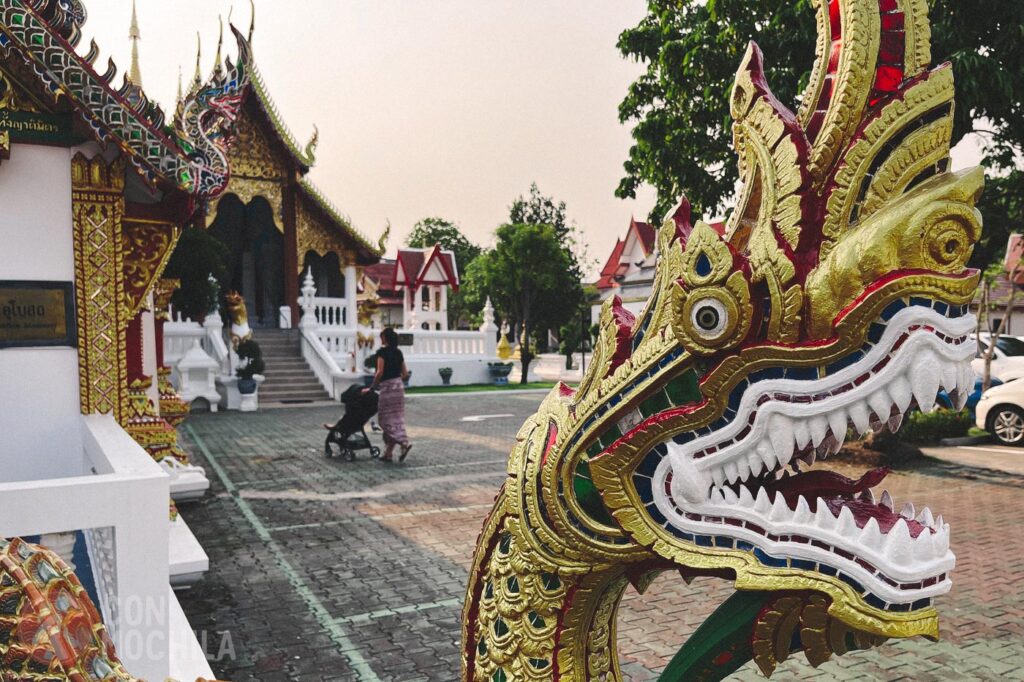
Its cultural richness, shaped by the coexistence of various ethnic groups and influences from Laos, Myanmar, and China, makes it one of the most significant cities in Thailand.
Chiang Mai is located in northern Thailand, and the seasons are marked by the monsoon:
Travel Tip: Check out our article on the best time to visit Thailand for month-by-month climate information.
To begin with, we always recommend getting good travel insurance Thailand. This can save you a significant amount on medical expenses and, most importantly, ensures that the insurance covers the costs upfront, so you don’t have to pay out of pocket.
In the previous article, we go into more detail about healthcare in Thailand, as well as tips on how to get the best insurance (and save money).
Nowadays, finding hotels, guesthouses, or restaurants in Thailand with free Wi-Fi is pretty common. However, there are still those who prefer (or need) to stay connected at all times.
That’s why we’ll show you how to get an eSIM Thailand card with internet— now also available with unlimited data.
As the largest city in northern Thailand, Chiang Mai is well connected to other cities in the country, the southern islands, and even internationally. You can reach Chiang Mai by plane, train, or bus:
The international airport is located just a few kilometers from the city center. The plane is the option many people choose when coming from the south or the islands, thanks to the numerous flight deals to Chiang Mai offered by various airlines.
In the arrivals area of the airport, there’s a mini taxi office called “TAXI METER” (despite the name, they don’t use meters), offering fixed rates to various parts of Chiang Mai. A ride to the city center costs around 150 Baht.
The railway line runs between Chiang Mai and Bangkok. A convenient way to travel to or from the capital is on one of the daily night trains. Sleeping in one of the bunks is quite an experience, saving you the cost of a night’s accommodation while arriving at your destination in the morning, ready to make the most of the day.
Once at Chiang Mai train station, you can take a songthaew (shared taxi) to the city center for around 30 Baht.
Arcade Station (bus terminals 2 and 3) is the busiest station, so you’ll likely arrive here if traveling by bus. Like other stations, you can either take a songthaew or negotiate a tuk-tuk to reach your accommodation, with prices generally starting at 100 Baht.
Depending on your starting point, we’ll suggest the best options. The most common routes to Chiang Mai are from Bangkok, Sukhothai, or Ayutthaya.
If you’re traveling from Bangkok to Chiang Mai, you have many options. We recommend taking the night train, which not only saves you a night’s accommodation but also offers a unique experience while being the most environmentally friendly transport option.
Buses run from both Old and New Sukhothai to Chiang Mai, but unfortunately, online booking isn’t available yet. That’s why we recommend booking your tickets to your next destination as soon as you arrive in Sukhothai. You can do this directly at:
We share our experience of the bus journey from Sukhothai to Chiang Mai in the article: “A Good Bus to Travel from Sukhothai to Chiang Mai.”
If you prefer to book a private taxi (which is more expensive), we’ve included a link for you to book in advance: “Book a Taxi from Sukhothai to Chiang Mai”.
The options for getting to Chiang Mai from Ayutthaya are similar to those from Bangkok, except that there are no flights available.
You can travel directly from Kanchanaburi to Chiang Mai by bus, without passing through Bangkok. We discovered a new VIP Bus, and we wouldn’t trade it for anything!
If you’d like, you can read about our experience on the VIP Bus, which you can reserve using the button above.
Wat Phra That Doi Suthep is one of our favorite temples in Thailand due to its beauty and location. It’s a must-see when visiting Chiang Mai.
There’s something about it that exudes spirituality, and it’s no wonder why it’s popular with travelers, especially because of the international Buddhist center where Vipassana meditation courses are offered.
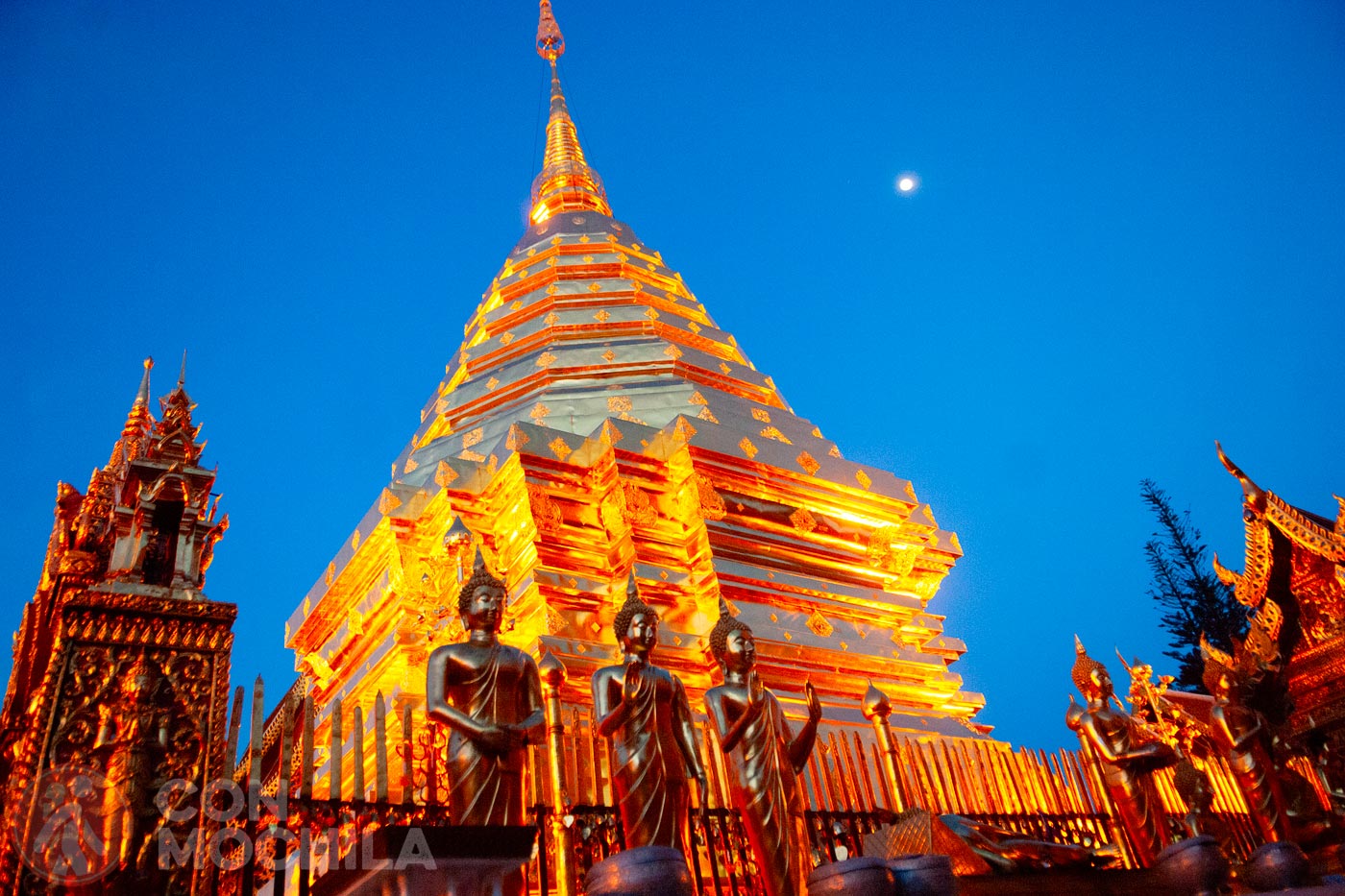
Wat Phra Singh is Chiang Mai’s only royal temple and one of its most beautiful. Famous for its golden stupa, it’s always busy with both tourists and locals.
Today, it is a complex made up of several buildings: the Wihan Lai Kham, Wihan Luang, Ubosot, Ho Trai, and Chedis.
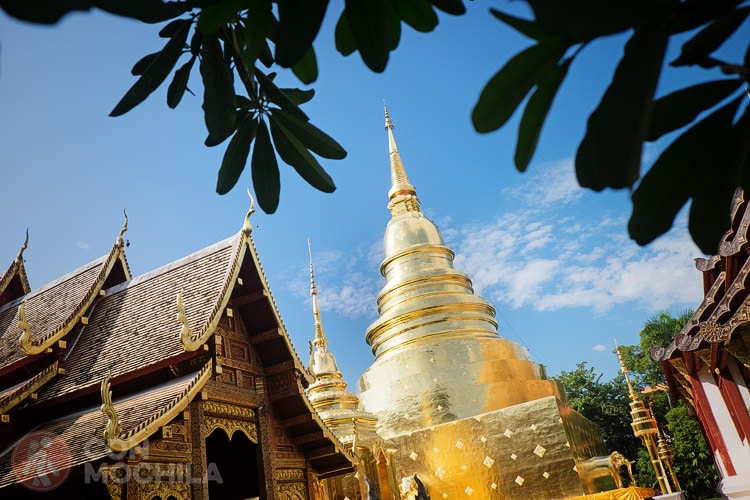
Wat Chedi Luang Worawihan Temple is more famous for what it lacks than for what it has. Once home to the world-renowned Emerald Buddha, it originally stood 82 meters tall but now reaches only about 50 meters due to earthquake damage.
Despite this, the majestic Wat Chedi Luang remains a must-see in Chiang Mai.
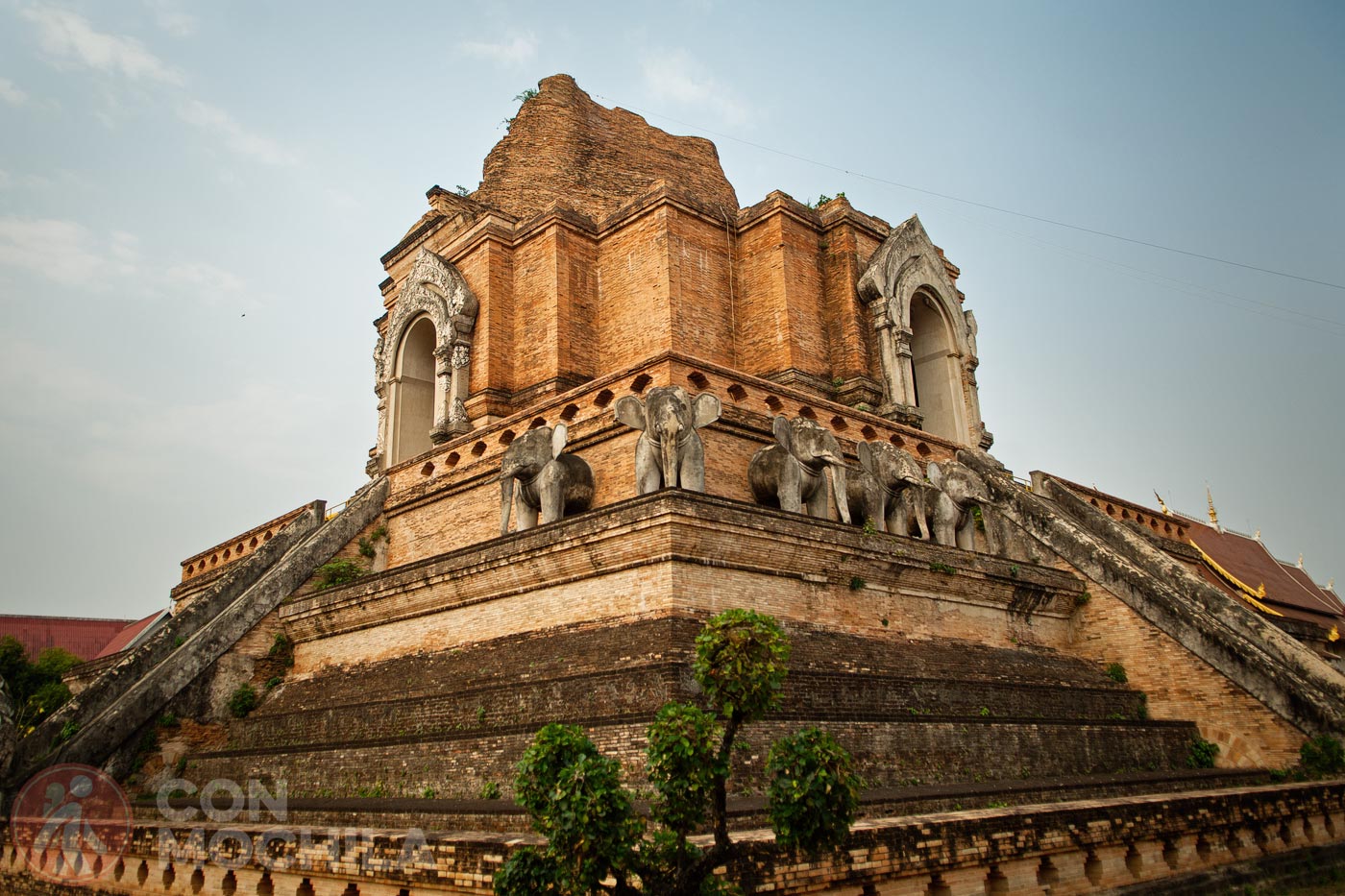
Wat Chiang Man is the oldest temple in Chiang Mai, built at the same time the city was founded. Today, it is a complex housing several buildings: Ubosot, Vihara, Chedi, a library, and the monks’ quarters.
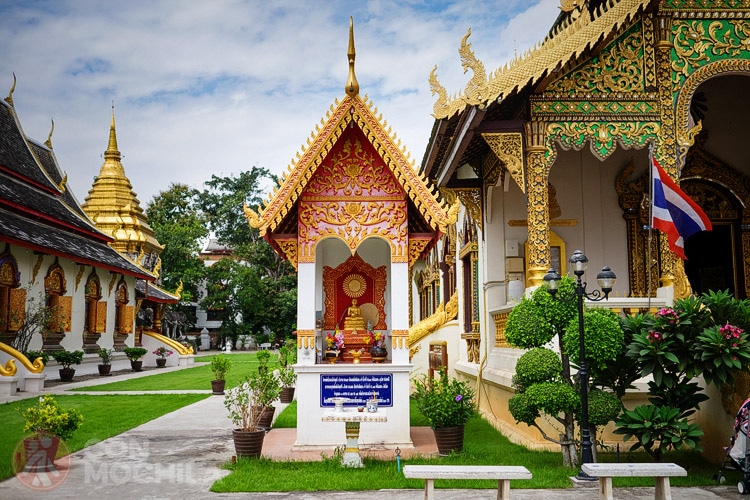
Known as the “Tunnel Temple,” Wat Umong sits at the foot of Mount Suthep. Over 700 years old, it is surrounded by a peaceful, serene atmosphere, and it also houses a significant meditation center.
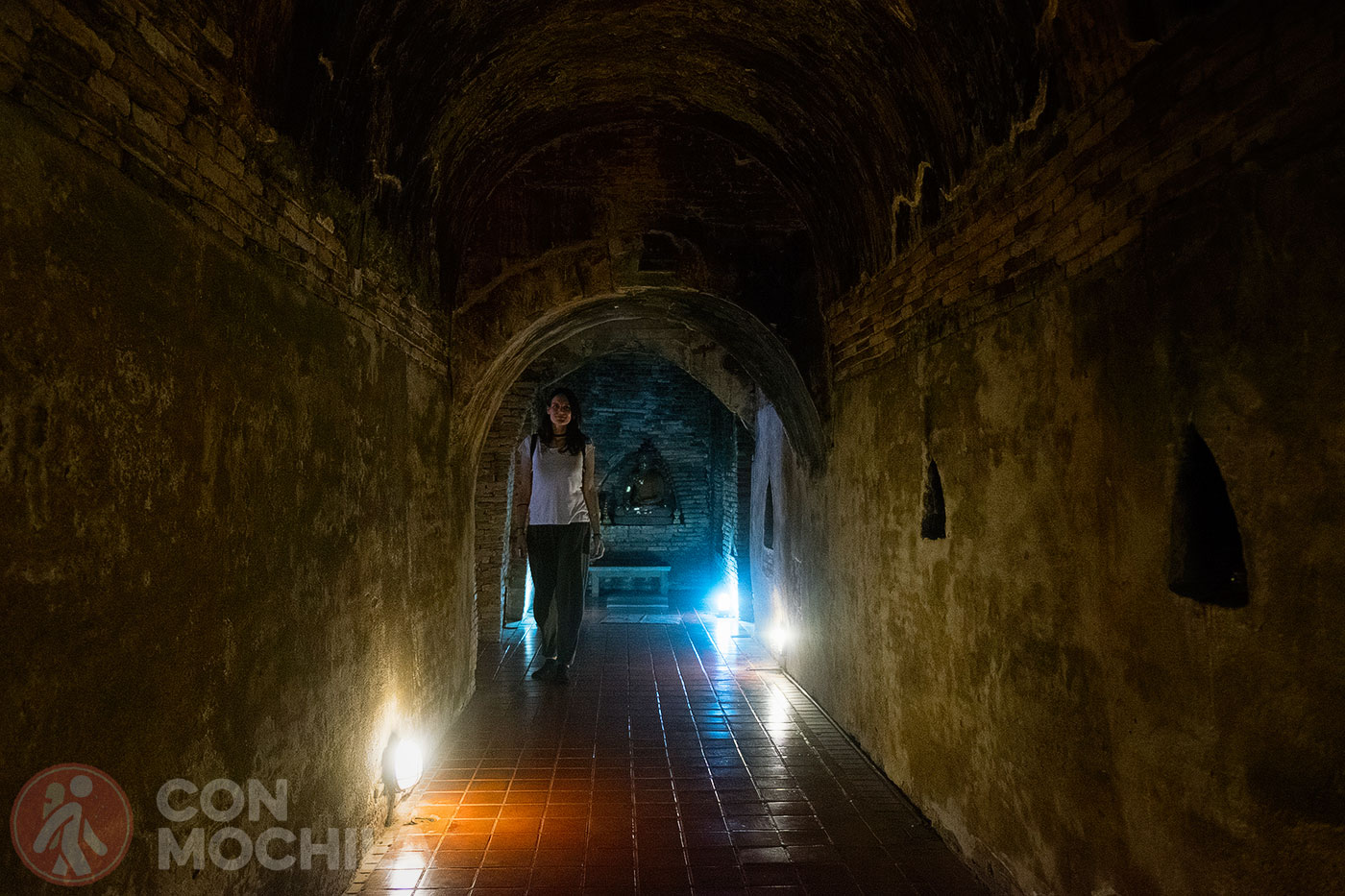
Often overlooked by visitors, Wat Suan Dok is one of the most famous temples in Chiang Mai. According to legend, it houses a relic of the Buddha himself, closely related to that of Wat Phra That Doi Suthep.
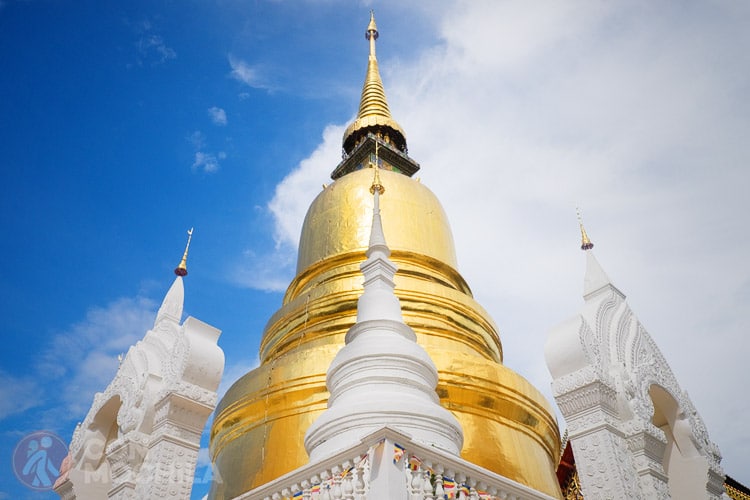
Chiang Mai’s Night Bazaar is undoubtedly the city’s most popular market, particularly with visitors. Here, you can find t-shirts, jewelry, souvenirs featuring elephant prints, and much more.
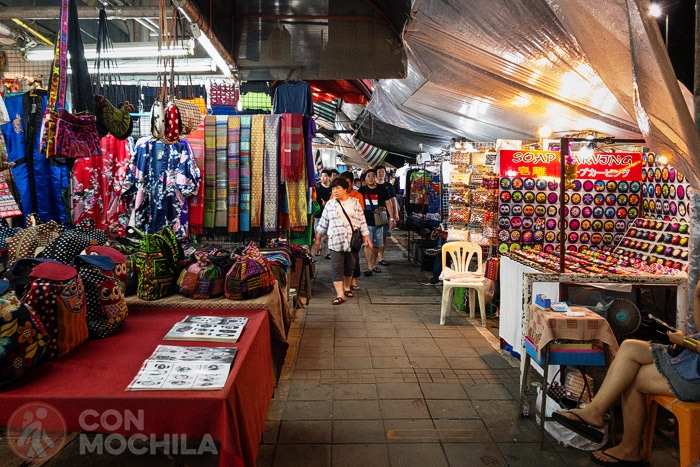
It’s the perfect place to buy a souvenir from your trip to Thailand. The market is open daily from 6 PM to midnight and is easily accessible on foot from the historic center.
Also known as Kad Luang, Warorot Market is the largest food market in northern Thailand. Located in the heart of Chinatown, it offers a wide range of local foods and items, much like a department store.
Just a couple of blocks north of the Night Bazaar, Warorot Market is easy to reach on foot.
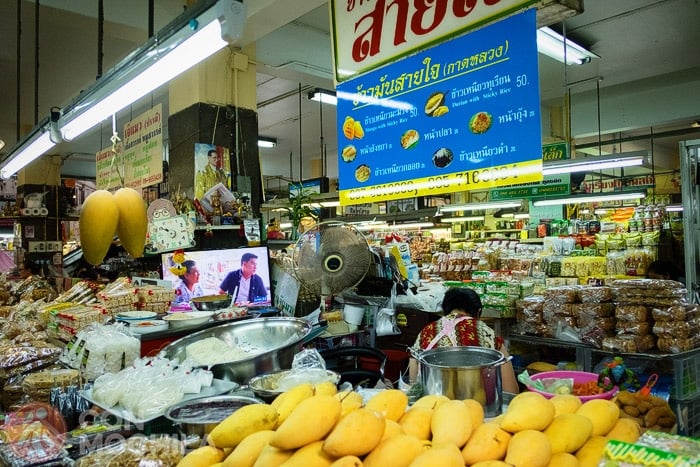
It is open every day from 7 AM to around 6 PM, and in the evenings, local food stalls pop up in the surrounding area.
This lively night market is ideal for having a drink while sampling local dishes. It’s open daily from 4 PM to midnight.
It’s the perfect spot to relax and have dinner after exploring the nearby alleys full of stalls at the Night Bazaar.
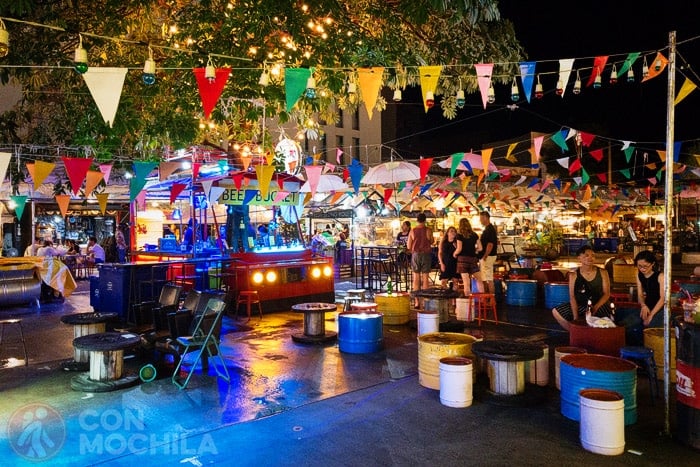
Chiang Mai is filled with coffee shops, great for meeting up, relaxing, or getting some work done. But these aren’t just ordinary cafes. They are themed establishments where cappuccino and americano share the menu with iced coffees, ice creams, and desserts.
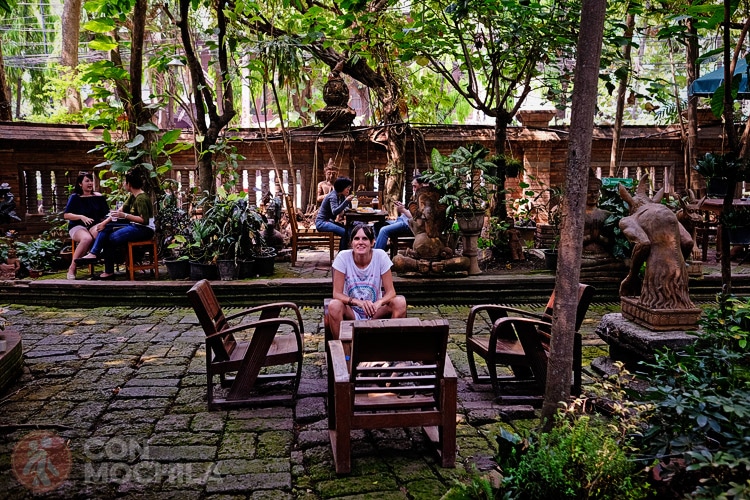
Some are super modern, seemingly designed for Instagram photos, while others feature beautiful gardens, like the Clay Studio Coffee, which feels like you’ve stumbled upon ancient ruins.
The only downside: the amount of plastic and straws used to serve iced coffees…
Chiang Mai is a city of contrasts, and while the old town is steeped in history and culture, the Nimmanhaemin district is all about modernity and entertainment
Home to the Maya shopping center and located west of the city walls, the area is packed with trendy restaurants, charming cafes, and bars offering live music, all centered around Nimmanhaemin Street.
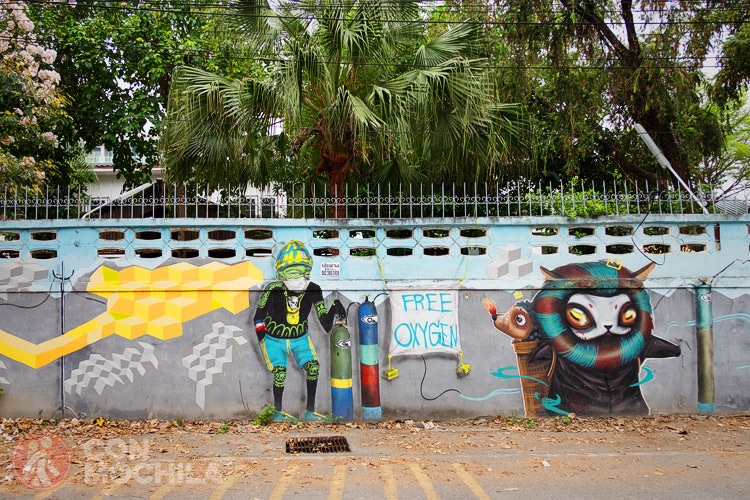
No en vano se ha ganado la fama (casi mundial) de ser el barrio hipster de la ciudad, y mientras los turistas lo recorren, los nómadas digitales, que han acudido embelesados a la ciudad, se reúnen en los espacios de trabajo de coworking.
The Santisook Dogs and Cats Rescue Foundation is a small group of Thai volunteers dedicated to helping stray dogs and cats in Chiang Mai and surrounding areas.
Their mission is to improve the quality of life for animals by working with local communities to find solutions to the issues surrounding stray animals and their coexistence with humans.
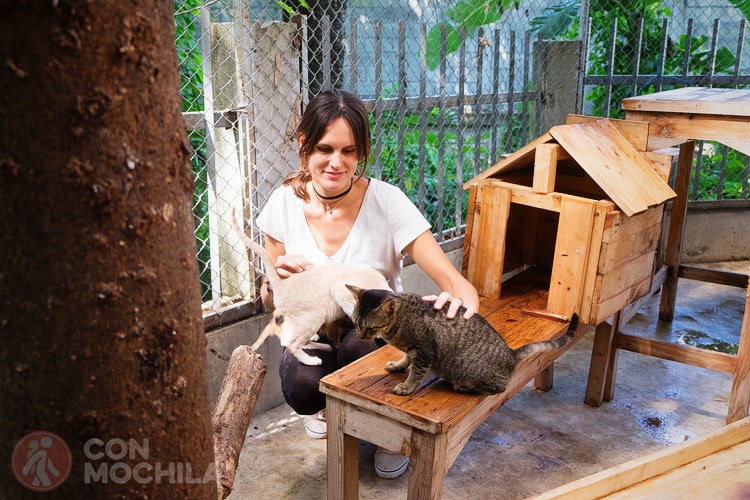
They operate two shelters: one for cats in Doi Saket and one for dogs south of Chiang Mai. If you’d like to help or volunteer (whether you’re a vet or not), you can find more information in the article.
With the slogan “Let’s paint a brighter future,” the Elephant Parade store sells plaster elephants and acrylic paints so you can create your own work of art, all while raising awareness about the plight of real elephants.
Twenty percent of the profits are donated to elephant welfare and conservation projects.

There are a couple of shops in Chiang Mai, and the best part is that they offer a space for you to paint right there, with plenty of examples and designs for inspiration. Outside the shop, you’ll often find a larger painting by an artist.
We may not be artists, but we do have our own little elephant, and we’re creating our own design. It’s a lot of fun and makes for a unique and original souvenir!
Chiang Mai is undoubtedly the cultural capital of northern Thailand. Its rich history can be traced through the walls and chedis (stupas) of over 300 Buddhist temples that have been built across the city since its founding.
Exploring these temples is a must for any visitor. If you’re short on time, we’ve written an article with a list of our favorite temples in Chiang Mai, along with routes for seeing as much as possible in just one or two days.
Remember to dress appropriately: pants or skirts below the knees and shoulders covered. When in Rome, do as the Romans do!
Chiang Mai is surrounded by lush natural landscapes. Just outside the city, you’ll find a world of beauty waiting to be explored. More than 700 km of natural parks with hot springs, waterfalls, and forests that are often overlooked by travelers.
You can also use Chiang Mai as a base for exploring other destinations further north. There are buses and vans departing from Chiang Mai station to various locations, making it an ideal hub for exploring northern Thailand.
Buses or vans leave from Chiang Mai station to many destinations, so you can organize your trip to Thailand using Chiang Mai as a “hub” to visit the entire north.
While many say a week is needed to see most of Chiang Mai’s attractions, here are some leisure activities you shouldn’t miss if you have the time:
East of Chiang Mai’s old town lies Doi Suthep Mountain. Most visitors take a songthaew to the top to see the famous Wat Phra That Doi Suthep and Wat Pha Lat temples. Adventurous travelers, however, can hike up the “pilgrim trail.”
If you continue driving past the temple, you’ll discover more gems, such as Phu Ping Palace, a campsite, and the Hmong Khun Chankian village.
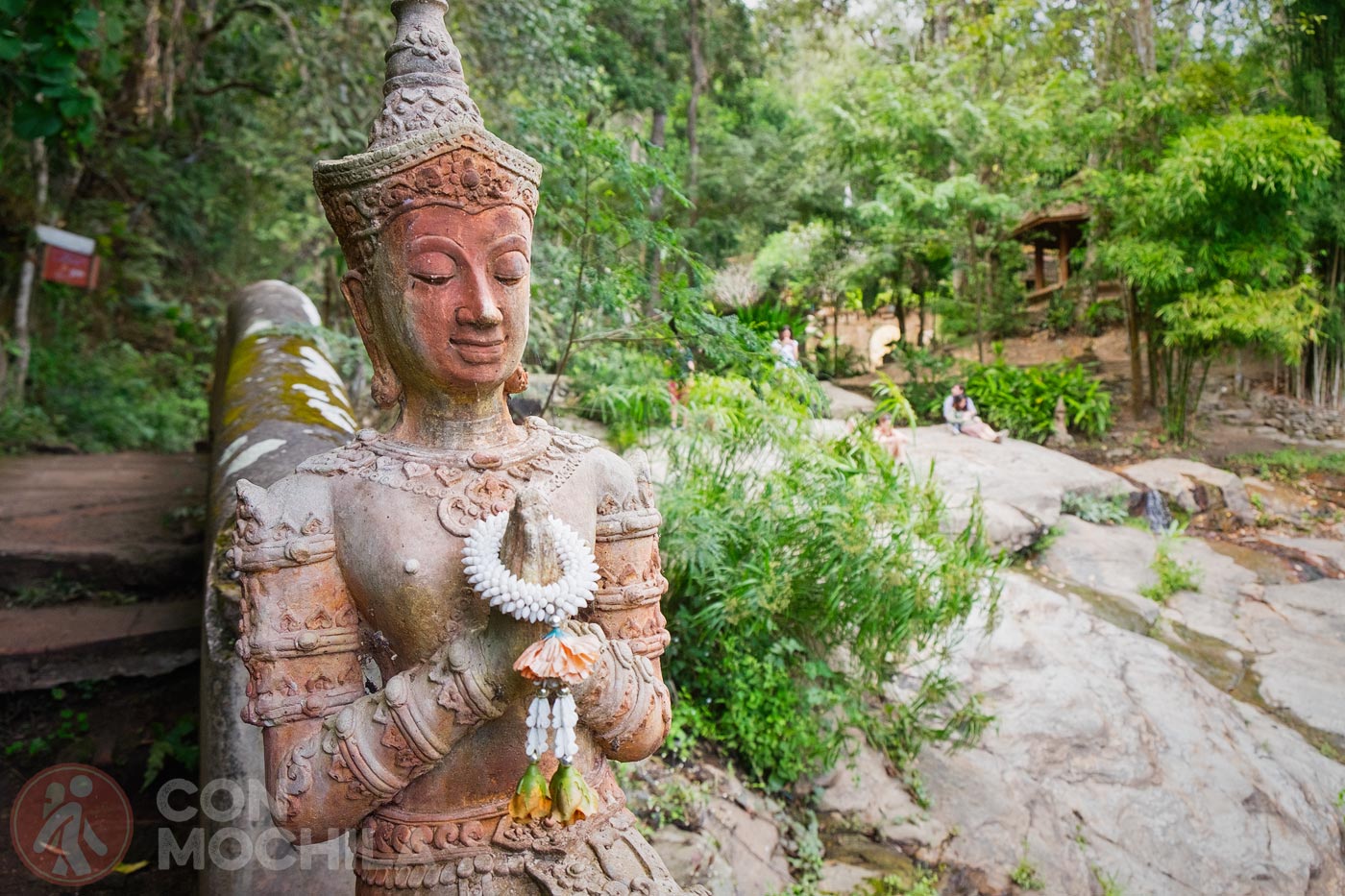
While Doi Pui, another nearby Hmong village, is more touristy, Khun Chankian is much less crowded.
In the northern part of Chiang Mai province, bordering Myanmar, lies Doi Pha Hom Pok National Park. This popular recreation area offers wooden huts for overnight stays, along with hot springs and mineral pools.
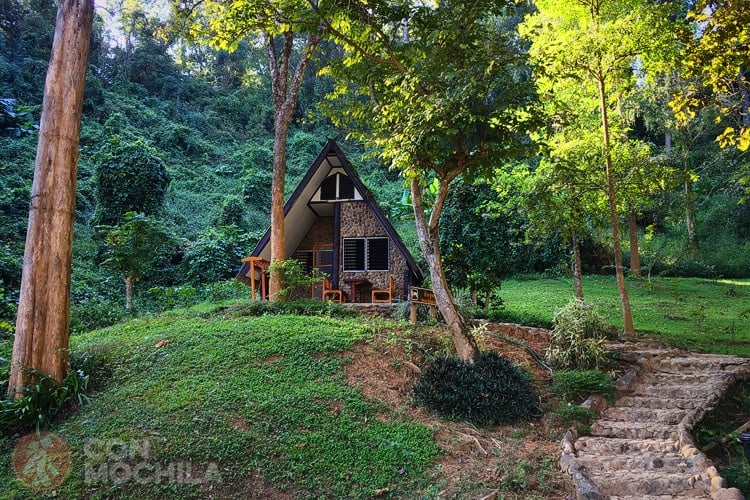
A bit further south, you’ll find Ang Khang Mountain and Ban Nor Lae Point, situated near the Burma border. At Mon Sone Viewpoint, there’s a camping area offering stunning views. The Sri Sangwan Waterfalls are located between Doi Pha Hom Pok National Park and Si Lanna National Park.
Additionally, Chiang Dao Mountain offers an exciting 3-day trek for those seeking adventure.
Although not one of Chiang Mai’s most famous attractions, Bua Tong Waterfalls, also known as Sticky Waterfalls, are a great escape from the heat. Located in Sri Lanna National Park, these falls are popular for their unique limestone surface that allows visitors to “stick” to the rocks and climb up, almost like Spiderman.
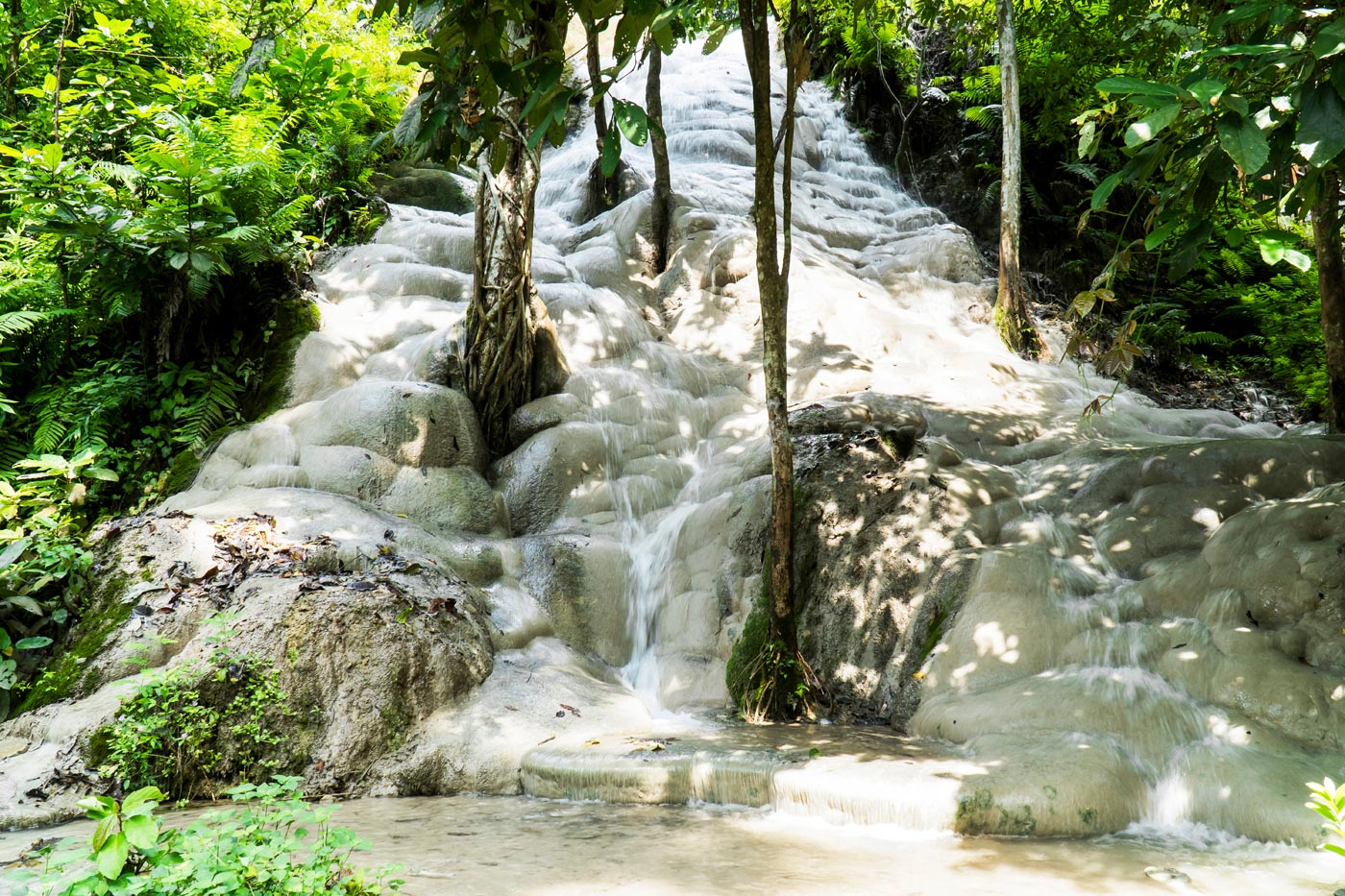
Other notable waterfalls in Chiang Mai include Huay Kaew Waterfall, located near the university area, and Mae Sa Waterfalls, found in Doi Suthep-Doi Pui National Park.
We stumbled upon Huay Tung Tao Lake by chance, and while it’s not typically featured on most Chiang Mai itineraries, it turned out to be a hidden gem. The lake is a favorite weekend spot for locals, offering a relaxing atmosphere where you can enjoy meals in bamboo huts along the shoreline.
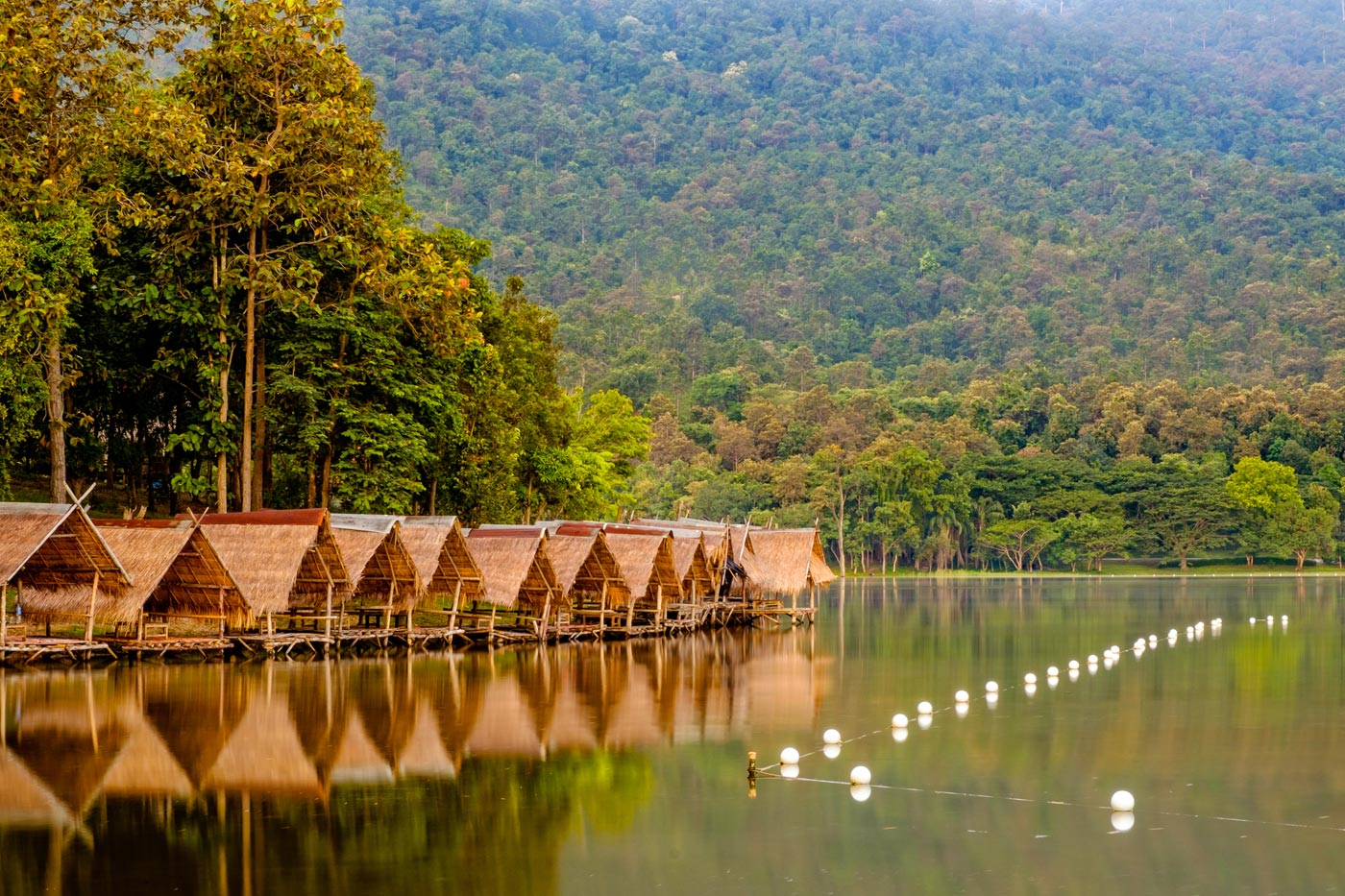
If you’re short on time, consider taking a day trip to Chiang Rai and the Golden Triangle. Although it’s a busy and full-day activity, it will give you a basic introduction to the area.
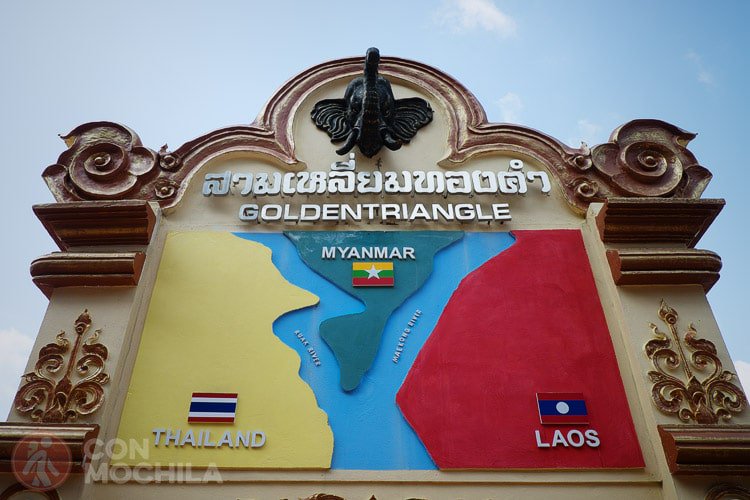
If you have more time, you can take a more leisurely visit to Chiang Rai, which is renowned for housing the extravagant White Temple.
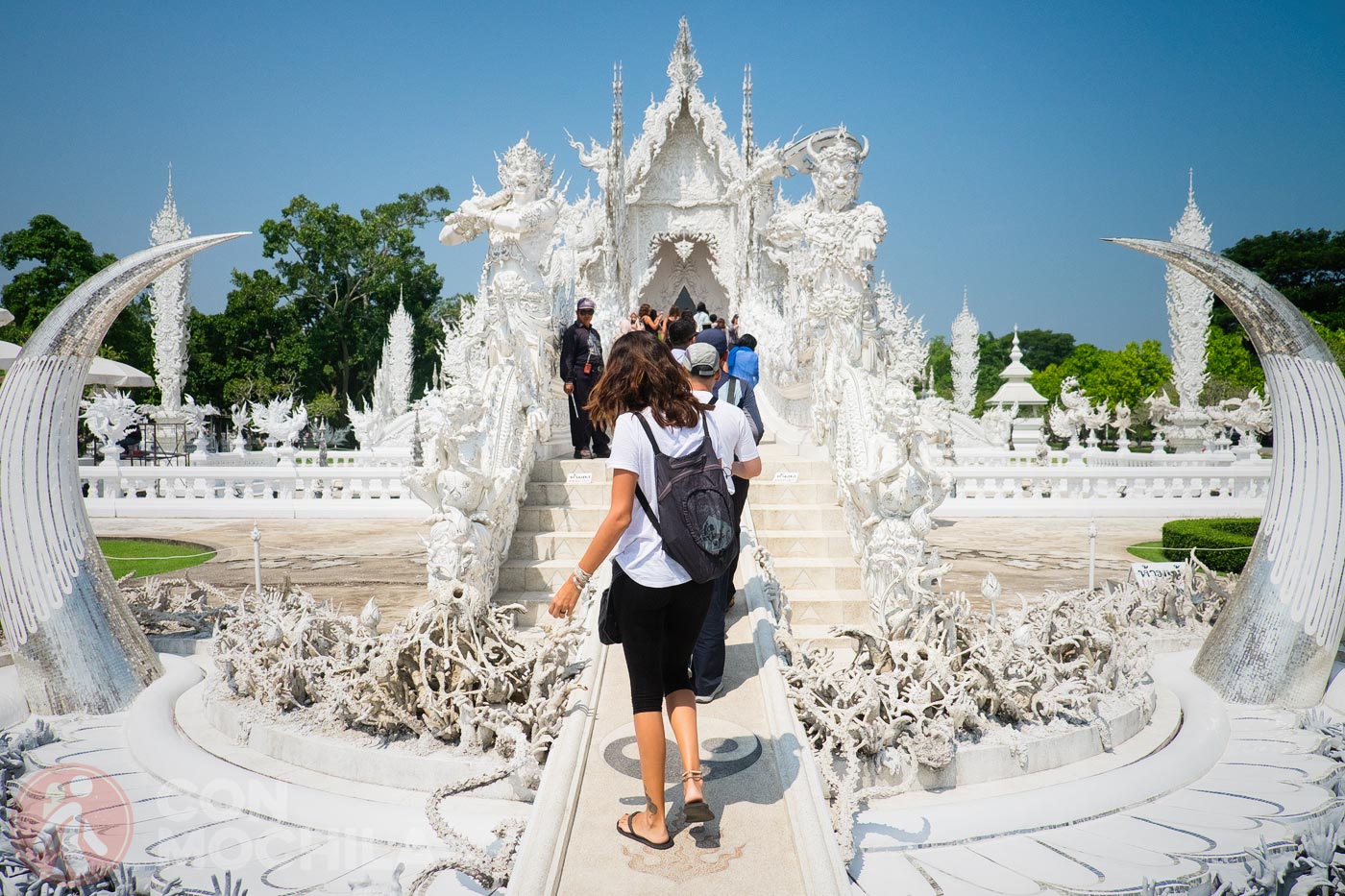
Pai is an ideal place to escape the chaos of Thailand. Although its reputation as a hippie destination might be outdated, its tranquility and charm make it worth a visit.
If you have limited time, you can take a trip from Chiang Mai to experience this gem of northern Thailand.
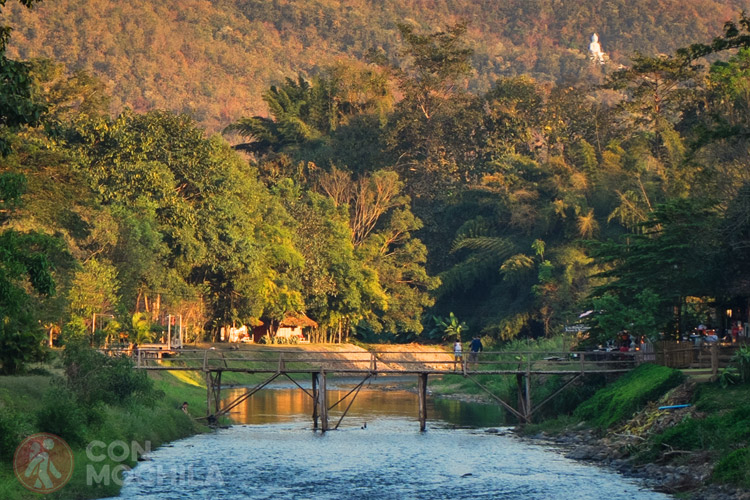
Few places in Thailand have as many massage centers as Chiang Mai, where you’ll find a massage spot on almost every street, often with someone at the door calling out, “Thai massage!”
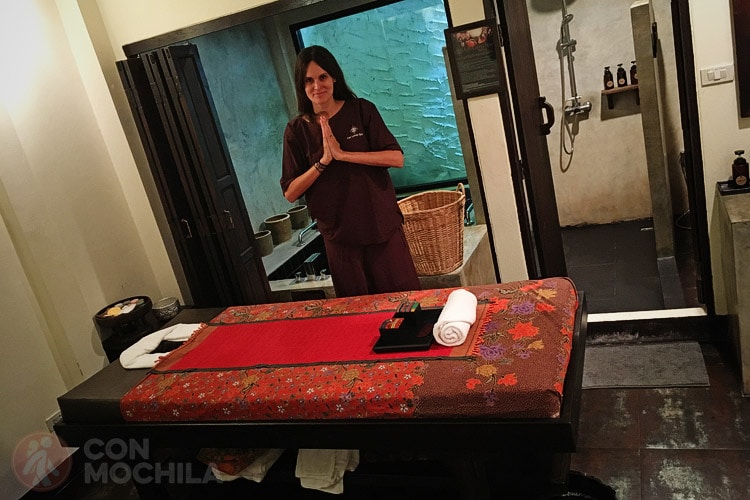
You’ll find the same types of massages everywhere: Thai, with oils, full-body, head and shoulders, feet, etc. The main differences between places lie in the treatment, décor, and atmosphere, ranging from a private home to an elegant and aromatic center like Fah Lanna, where Toni took me for my birthday.
The quality of the massage depends more on the skill and strength of the masseuse than on the luxury of the establishment.
One of the best ways to explore local cuisine, aside from ordering different dishes at every place you visit, is to take a cooking class.
In Chiang Mai, there are many schools offering similar experiences: group trips to the market to buy ingredients, followed by cooking and preparing various dishes, including a dessert.
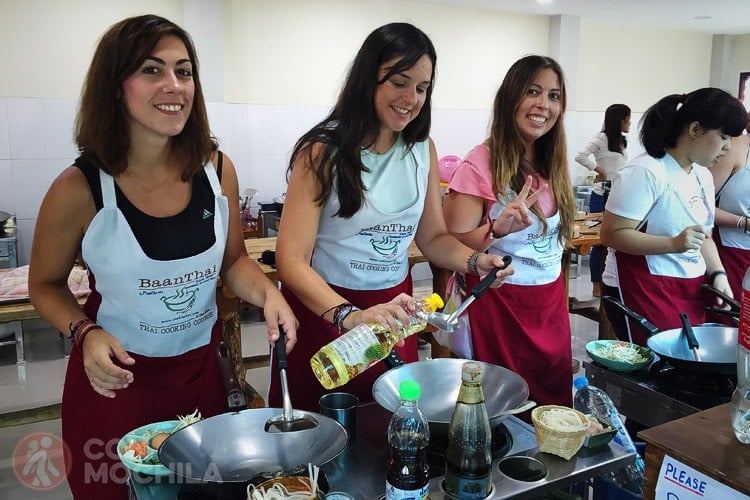
Groups typically consist of about six people, with each person having their own workstation equipped with utensils and a stove.
Many of these schools offer vegetarian options, and finding the best one is as simple as walking around the center and collecting brochures.
If you prefer, you can book in advance: “Market Tour and Cooking Class.”
While not as prominent as in some parts of India, which are renowned for their yoga and meditation courses, Chiang Mai offers many centers where you can practice both.
These schools typically offer classes for all levels, whether you’re a beginner or looking for a teacher training course. Finding the right one is as simple as googling “Yoga in Chiang Mai” and choosing the one that suits your needs.
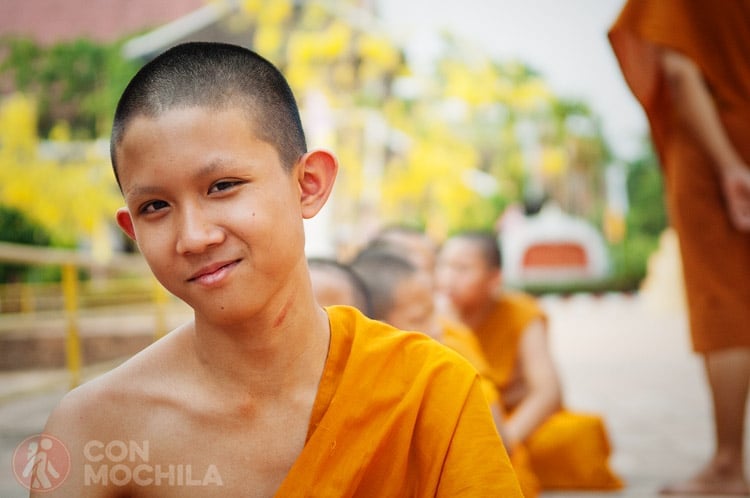
You can also practice Vipassana meditation at temples like Wat Ram Poeng, Wat Chom Thong, Wat Phrathat Doi Suthep, or Wat Phra Dhatu Sri Chomthong.
To fully enjoy Chiang Mai and its traditions, it’s a great idea to plan your visit around one of its festivals:
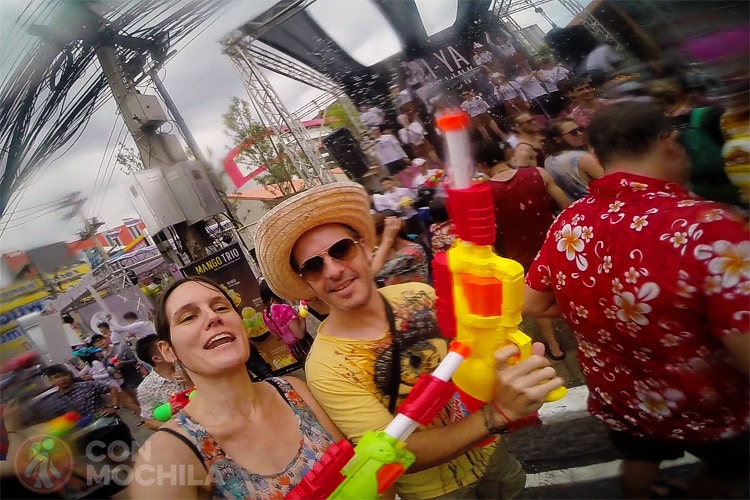
In Chiang Mai, there are several stadiums that host Muay Thai boxing matches several nights a week, including Taphae Boxing Stadium, Kalare Boxing Stadium, and Loi Kroh Boxing Stadium.
While Muay Thai is a popular sport in Thailand, and you might find someone subtly leaving a piece of paper (a simple photocopy) on your table with the list of upcoming fights while you’re eating or having a drink, it’s worth noting that we are not particularly fond of this sport ourselves.
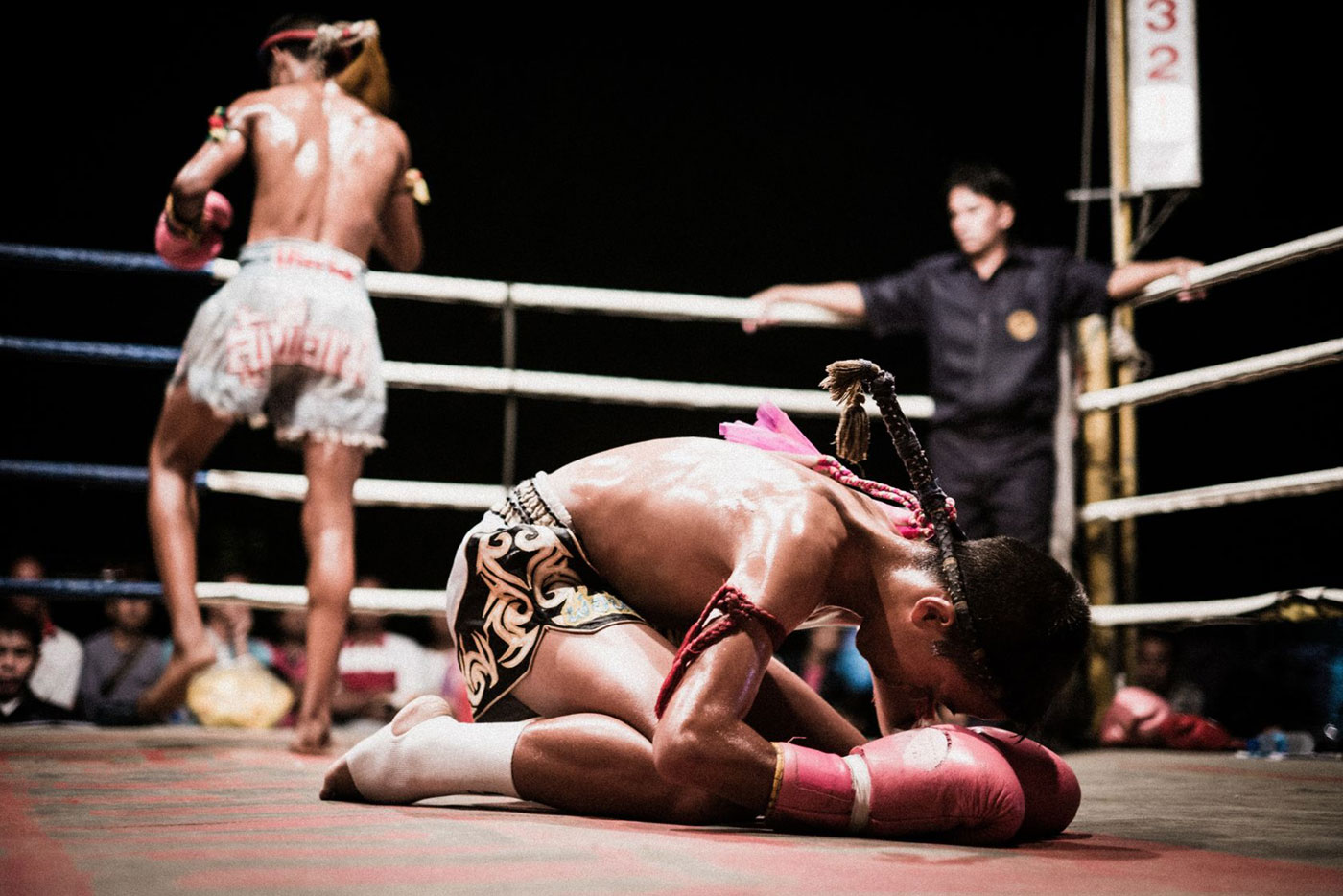
If you’re a fan or just curious, it’s a good opportunity to experience it. However, we recommend reserving your ticket in advance, as the events often sell out quickly. Check out Muay Thai Night at Taphae Boxing Stadium.
Honestly, during our entire stay in Chiang Mai, the Grand Canyon Water Park never seemed like a more appealing option than what we were already doing. In the end, we never visited.
However, it’s heavily advertised on tuk-tuks and through travel agencies, so we thought it deserved a mention: “Grand Canyon Water Park Entrance.”
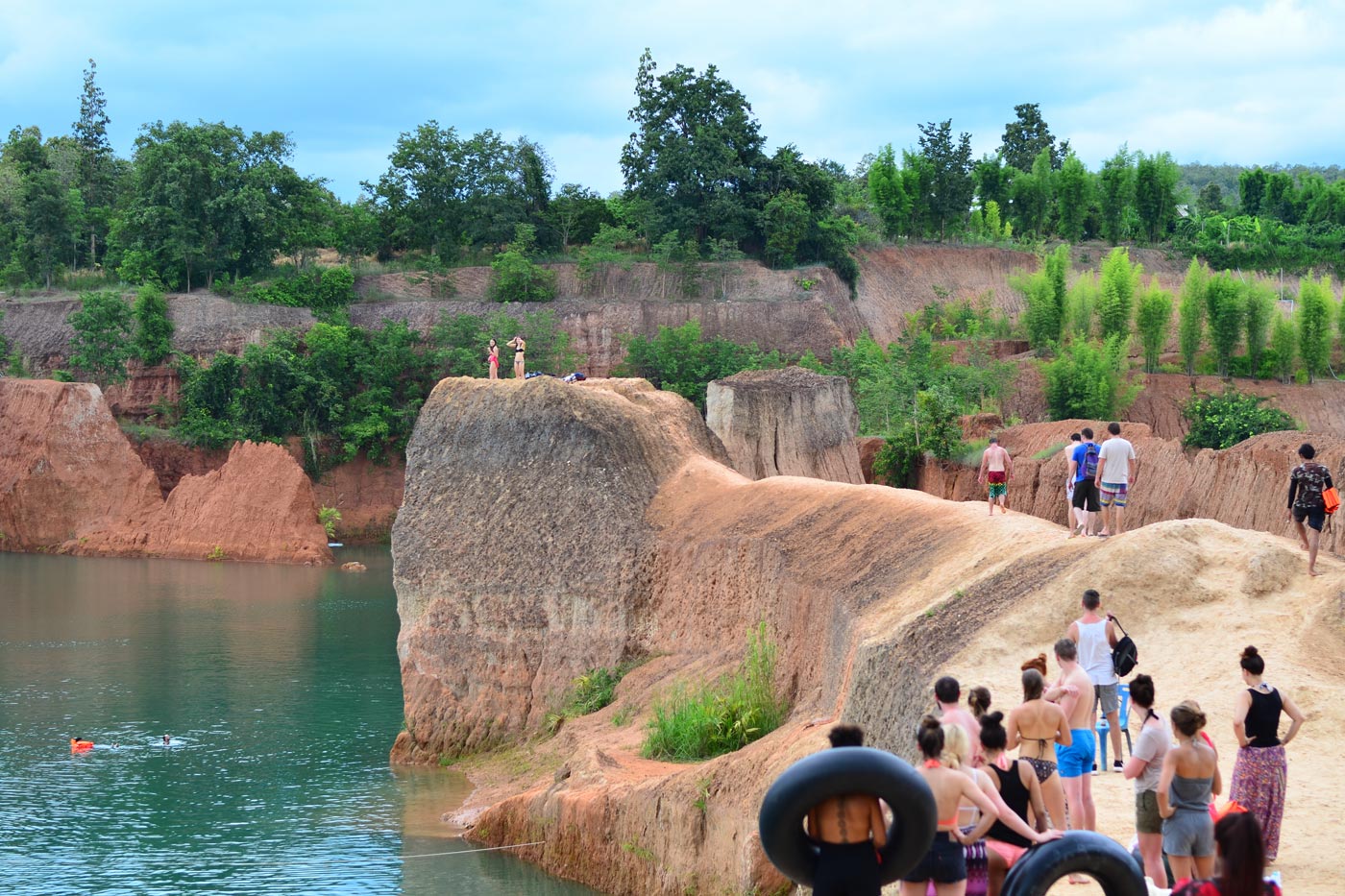
Here are some additional fun activities you can enjoy in Chiang Mai:
Although there are hotels all over, we recommend staying in the historic center of Chiang Mai, so everything is within easy reach. Our favorite accommodations are:
Below we have listed a few accommodations located in the historic center of Chiang Mai organized by price range:
Chiang Mai has a lot to offer, but if you have limited time, you’ll need to prioritize what to see and what to skip. Despite your best efforts, you might still feel like you’re missing out on something. Below, we outline suggested itineraries for 2, 3, and 4 days in Chiang Mai.
With a minimum of 2 days, you can cover the essentials of this northern Thai city, although we recommend spending a bit more time to fully appreciate its charms.
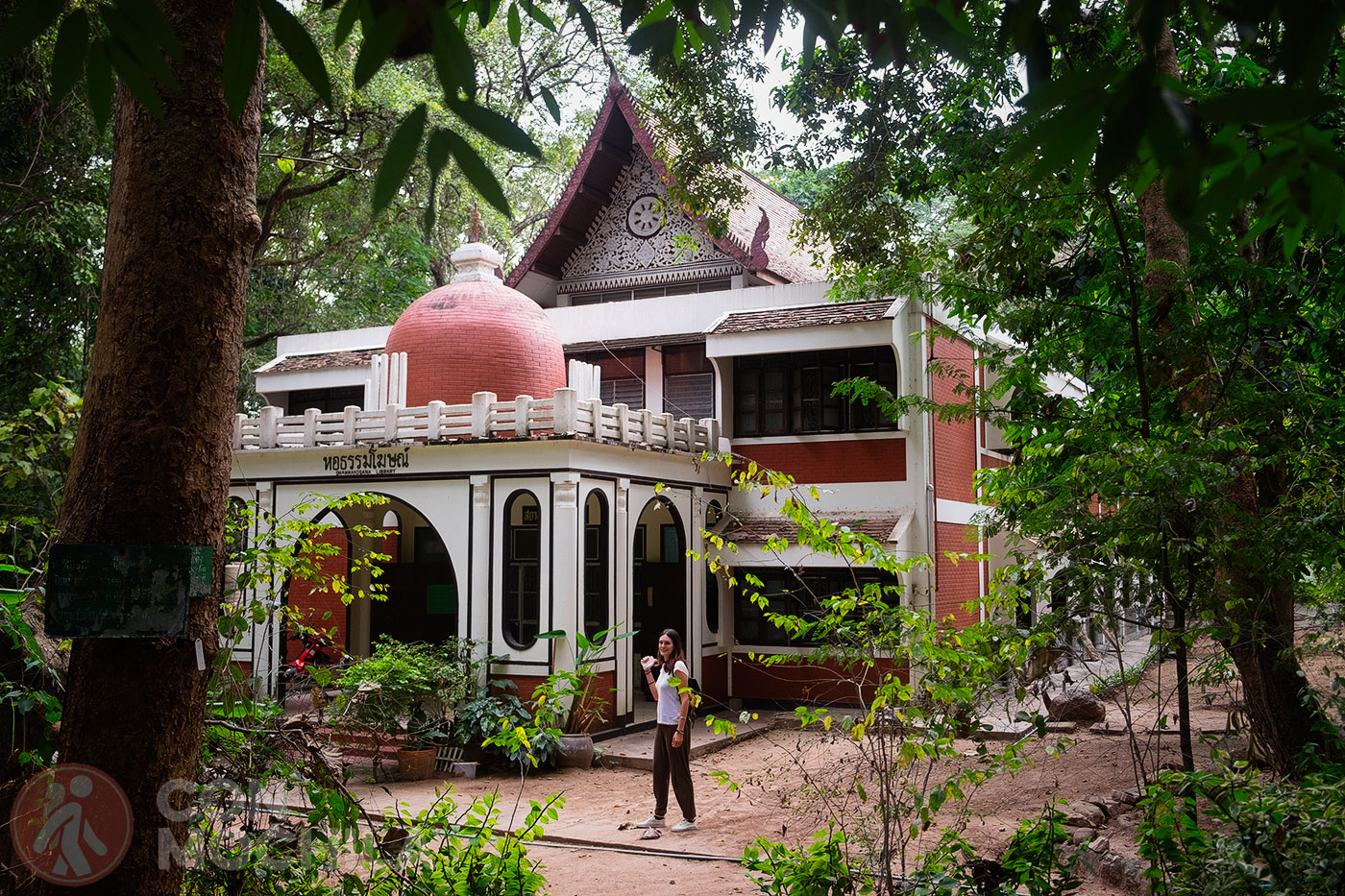
To see the essentials of Chiang Mai and its surroundings, you’ll need at least 2 days. Here’s a detailed 2-day itinerary:
We suggest getting lost in the historic center of Chiang Mai. Here are a few options based on your interests:
Take a temple tour through the old town.
Visit some temples and explore the night markets, with an opportunity to have dinner.
O si lo prefieres, puedes contratar con anterioridad actividades organizadas de media jornada:
If you arrive by night train or early in the morning, you’ll have the entire day to enjoy. Use this time to explore the areas around Chiang Mai.
With a full day ahead, you can visit any temples you missed. With over 300 temples in the city, you’re sure to discover something wonderful at every turn. Check out our article on the Temples of Chiang Mai for a list of the most interesting ones.
You can take advantage of the entire day to see the temples around Chiang Mai, if you didn’t do it on the first day:
Alternatively, if you’ve had enough of temples, consider visiting one of the local markets that feature fresh produce every day.
You can also book full-day organized activities in advance.
If you follow our suggestions, the first 2 days will have covered temples, markets, and some excursions. On the third day, you can explore additional activities the city has to offer:
On the final day, you can either complete any sightseeing you didn’t manage in the first 3 days or opt for a more relaxed day enjoying the old town, its terraces, and, most importantly, its massage centers.
Explore all the leisure activities, nature, and attractions Chiang Mai has to offer. After 4 days, you may still feel like there’s more to see, which is a great excuse to come back.
We do not recommend elephant rides, primarily due to the mistreatment involved in training elephants to be submissive, known as the phajaan.
Another popular activity in Chiang Mai is visiting an elephant rescue center, but be cautious. Many so-called sanctuaries do not rescue elephants or operate as true sanctuaries.
The situation of elephants in Thailand is complex (see “Elephants and tourists: What we are willing to do (and what we are not) for animal welfare”).
If you decide you cannot leave Thailand without visiting one of these centers, do thorough research to avoid supporting unethical practices. For more information, read “Tips for visiting a wildlife sanctuary… ethical?”
The darker side of Chiang Mai includes numerous shows or activities involving animal exploitation and abuse, such as elephant rides, pachyderms painting pictures and playing football, photos with caged tigers, dancing macaques, and shows with crocodiles and snakes.
“We urge you to use common sense and thoroughly research these issues before making any decisions about visiting such places.”
Animals used for entertainment are often subjected to harsh training, have been removed from their natural habitats, and may have had family members killed. They are condemned to a life in captivity.
The final decision is yours, but if you truly care about animals, informing yourself beforehand will help you avoid regretting participation in something you don’t support. For further reading, we recommend these articles:
If you are one of those people who likes to try everything, Chiang Mai offers endless dining options, from street food stalls in markets (which we personally find to offer the best food) to a variety of high-end and budget restaurants.
One drawback of some touristy restaurants is that they may adjust the flavors to suit “farang” (the name they use to refer to foreigners) tastes, making the food less spicy and pungent, thus losing some of its authentic flavor.
Fortunately for vegetarians, Chiang Mai has a large number of vegetarian and vegan restaurants, and most other restaurants also offer vegan-friendly options. Check out our article on “The Best Vegetarian Restaurants in Chiang Mai” for recommendations.
To get around Chiang Mai, you can rent a bike, which provides great freedom for exploring the old town, although you can easily walk to see the temples within the city walls.
If you prefer not to have your own vehicle, the most convenient options are the traditional tuk-tuk or the songthaew, a red pick-up truck that you share with others. Songthaews are especially economical for traveling to places like Wat Phra That Doi Suthep.
For excursions in the surrounding area, you can join a group tour in a minivan after booking the activity, take the yellow songthaews, or rent your own motorbike. We rented a Honda Zoomer for several months from Pop Rider and had no complaints.
Be aware that you may encounter police checkpoints requiring an international driving license. It’s easy to get and will help you avoid any issues.
Click on the image and it will take you to a new Google Maps window with all the points of interest to travel around Chiang Mai.
ACTIVE CAMPAIGN !
Until december 1st, you can get an automatic 15% discount on your Heymondo travel insurance.